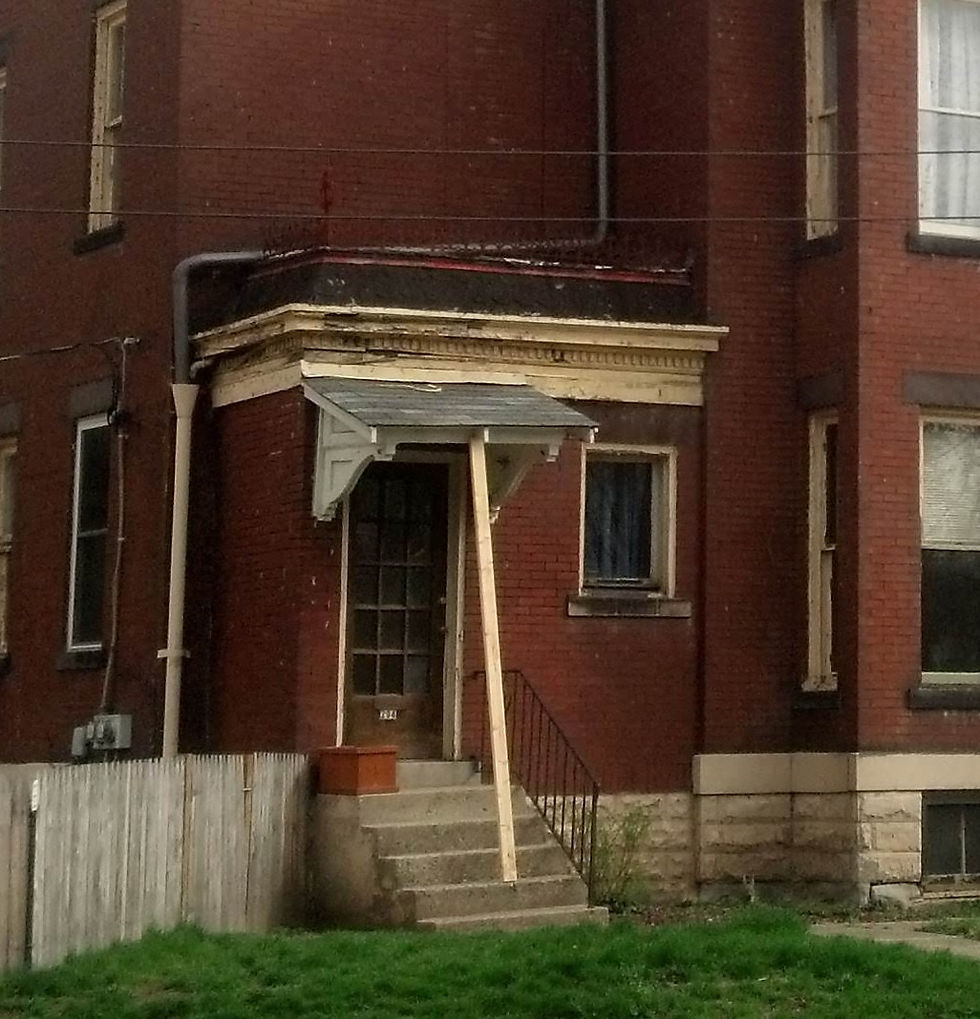You want Me to Learn What?
- sarahpetvet

- Apr 12, 2016
- 2 min read
During the restoration of our windows I came to an important realization: Those windows on the first floor where the original woodwork was intact and unpainted were faux painted on the inside. Most of the first floor windows had so little attention over the years that the interior wood surfaces were darkened with age and neglect. In some cases, moisture had destroyed the original finish and caused some damage to the wood. The need to do repair with epoxy meant the windows couldn't be stained to match the woodwork.
Once stripped, the first floor windows were no different than all the other windows we had restored thus far. They were made of pine, not the white oak that comprised the woodwork on the first floor. So even without the need for repairs with epoxy, the pine windows really wouldn't be suitable for staining. Time to learn about faux painting!
I turned to the internet first, of course. I found some nice video of an expert faux painter working on a door, but without narration or subtitles, I could only observe and make some suppositions. I also found videos with narration by a woman who creates less traditional-looking projects with fairly traditional approaches. From these videos I gained a broad understanding of general concepts. At that point, lots of practice and a great deal of trial and error were all that stood between me and great looking windows!
Regardless of the final look one desires, the approach is the same: an opaque base coat, followed by a layer of a paint-glaze mixture. Whatever wood grain or other faux finish is sought determines how the overlying glaze is manipulated.

I purchased a tool to simulate wood grains, but I observed when watching the online videos that experts have tools they have adapted to particular uses--such as an old paint brush with uneven and splayed bristles. The tool pictured above yields a fairly strong pine look:

Here, the wood grain is too prominent for an oak faux finish, so I applied a final coat of paint and glaze in the same ratio just using a dry disposable brush with broken and splayed bristles. The tone of this final coat can be tweaked to allow a better match to the surrounding trim.
Step by Step:

The base coat is Sherwin Williams' "Anjou Pear," which is a soft, buttery yellow. Once dry, I follow with a shade of warm brown cut with glaze in a ratio of 5 parts glaze to 1 part paint. This ratio seems to keep the color sheer enough.

The final treatment came about over time and pretty much by accident! If I use the stain we have used on all of the first floor woodwork--both new and that needing restoration--the window matches surrounding trim perfectly!

Add some dressy new hardware and voila!







Comments